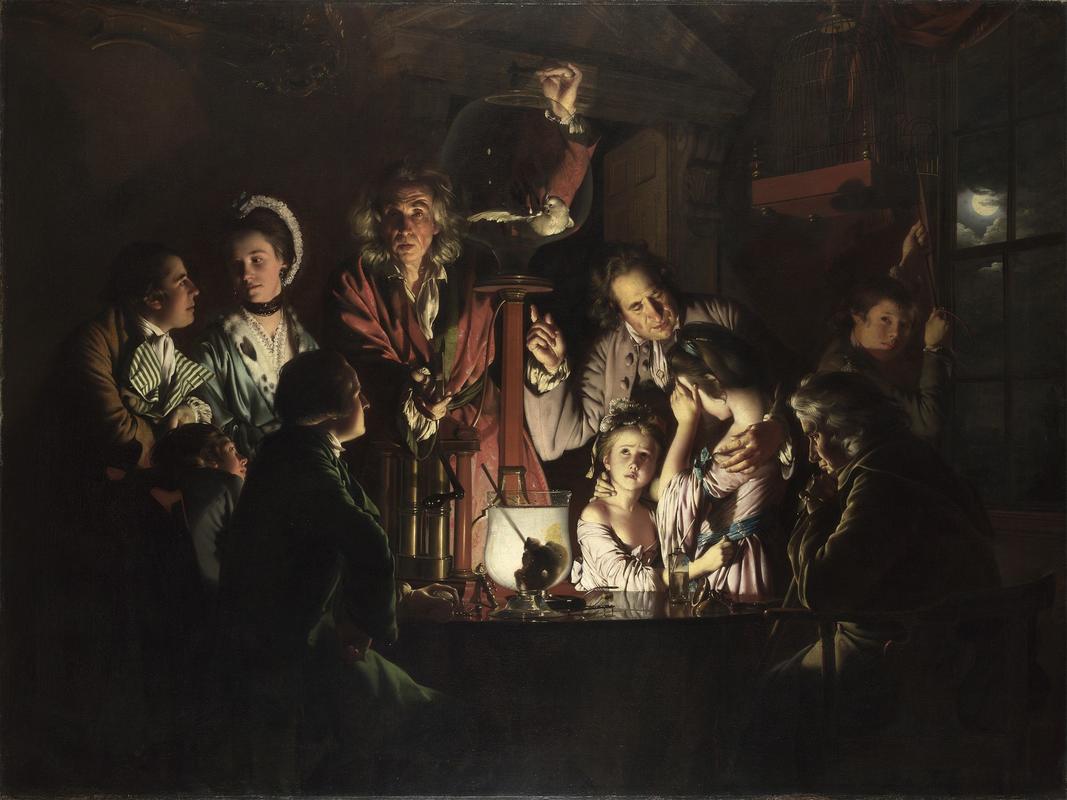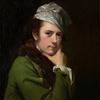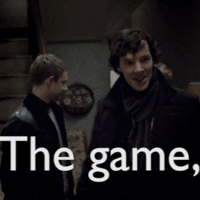More about An Experiment on a Bird in the Air Pump

Sr. Contributor
A wealthy family spends quality time watching a vagabond possibly kill their bird with science.
The machine in the painting is of the pneumatic variety, pumping air out of a large glass beaker to demonstrate the effect of vacuums on lungs. This experiment was old hat by the time of Wright's painting, a century worth of old hats. It's like if an artist today painted a family watching a Tamagotchi die of malnourishment.
The bird in question is a cockatoo. Which is also ridiculous, considering how expensive this bird would be in 18th century England. Cockatoos were a status symbol in a time before cars and wristwatches, and when skin diseases were much more prevalent. As such, the cavalier way this pockmark-less family has subjected their glorious cockatoo to the precipice of rigor mortis is simply astounding. Astounding, I say!
While the victim in this piece is a cockatoo, traveling science magicians like the one pictured also suffocated mice, eels, snails and flies for the delight of paying crowds. If audiences were particularly squeamish, as was often the case with children, an animal substitute was proffered. The animal substitute being a "lung glass with bladder" that constricted to simulate what happens to lungs in a vacuum. Don't worry kids, just stare at the fake organs get squeezed to smithereens by the shapeless hand of an uncaring God.
The first owner of this painting was a prominent member of the Hellfire Club (a group of wealthy socialites who enjoyed orgies in haunted places under moonlight, as well as *gasp* gambling and, the horror, drunkenness *faints*). Wright sold this devilish patron the painting for 130 pounds. However, Mr. of Derby said he'd have to tell everyone the sale was much higher to preserve the price of his other works. Records show he only received 30 pounds of the bill.
Featured Content
Here is what Wikipedia says about An Experiment on a Bird in the Air Pump
An Experiment on a Bird in the Air Pump is a 1768 oil-on-canvas painting by Joseph Wright of Derby, one of a number of candlelit scenes that Wright painted during the 1760s. The painting departed from convention of the time by depicting a scientific subject in the reverential manner formerly reserved for scenes of historical or religious significance. Wright was intimately involved in depicting the Industrial Revolution and the scientific advances of the Enlightenment. While his paintings were recognized as exceptional by his contemporaries, his provincial status and choice of subjects meant the style was never widely imitated. The picture has been owned by the National Gallery in London since 1863 and is regarded as a masterpiece of British art.
The painting depicts a natural philosopher, a forerunner of the modern scientist, recreating one of Robert Boyle's air pump experiments, in which a bird is deprived of air, before a varied group of onlookers. The group exhibits a variety of reactions, but for most of the audience scientific curiosity overcomes concern for the bird. The central figure looks out of the picture as if inviting the viewer's participation in the outcome.
Check out the full Wikipedia article about An Experiment on a Bird in the Air Pump















